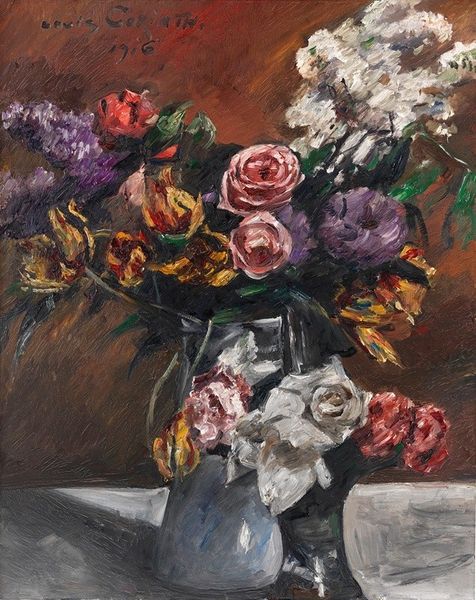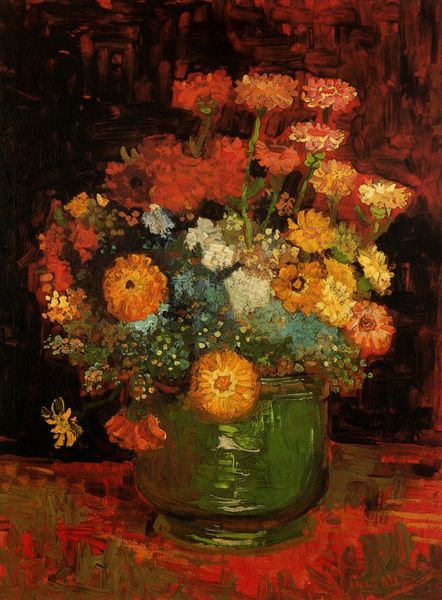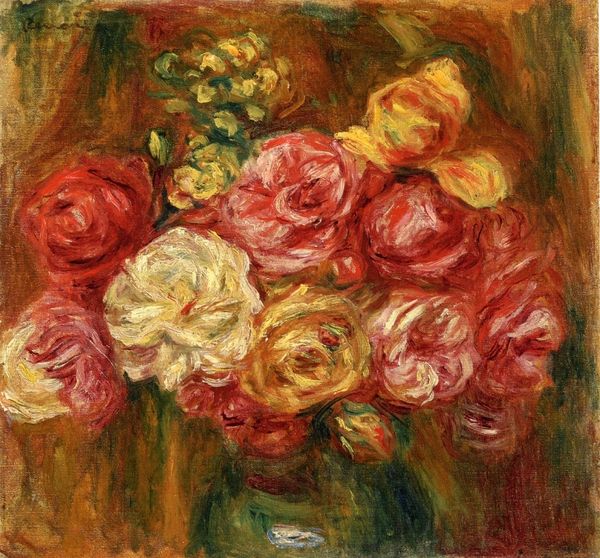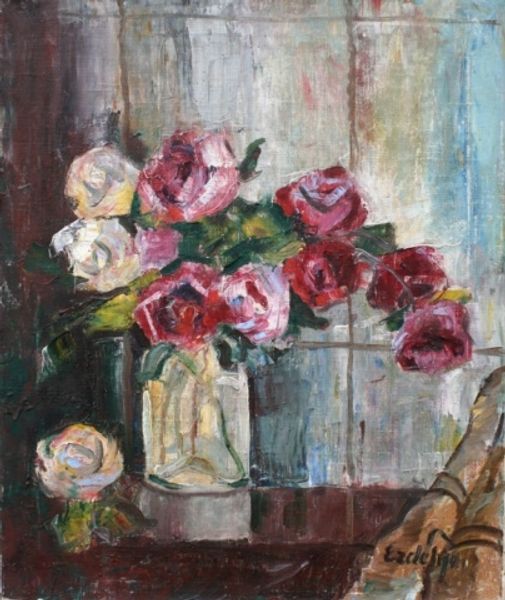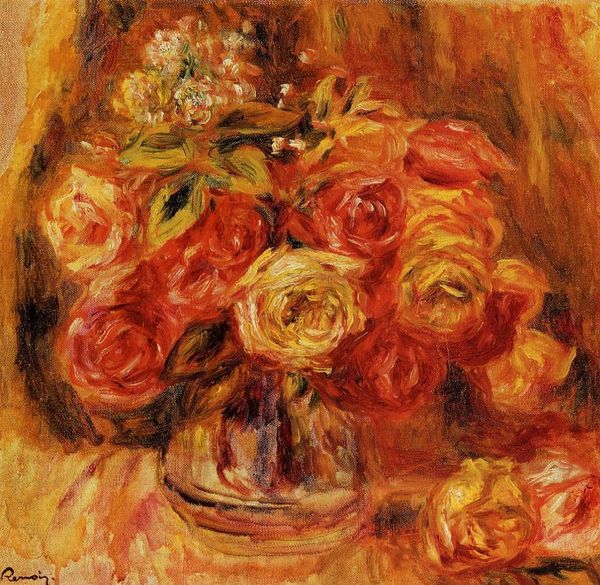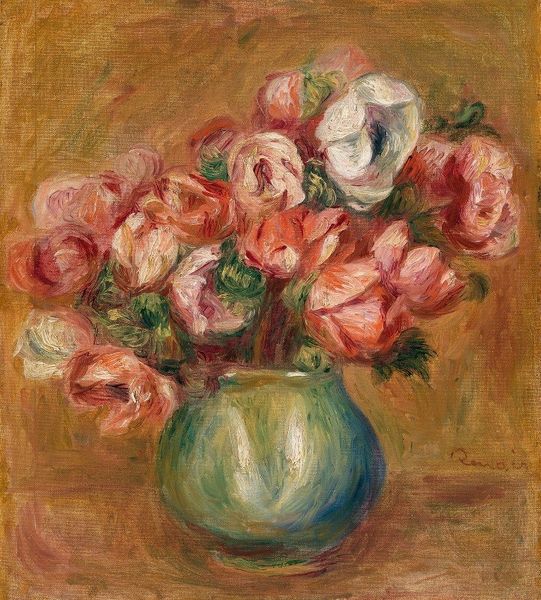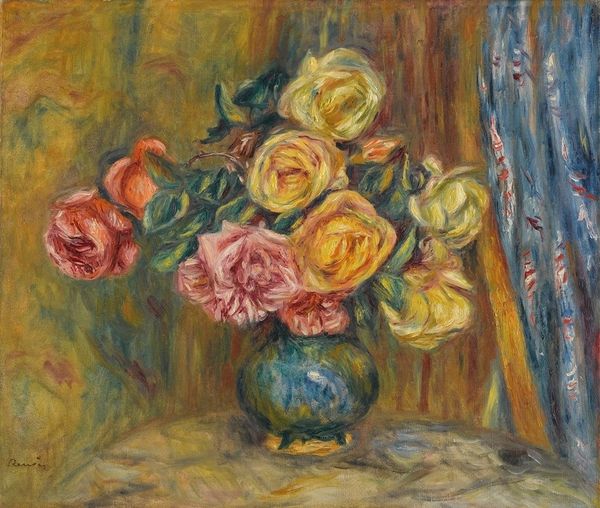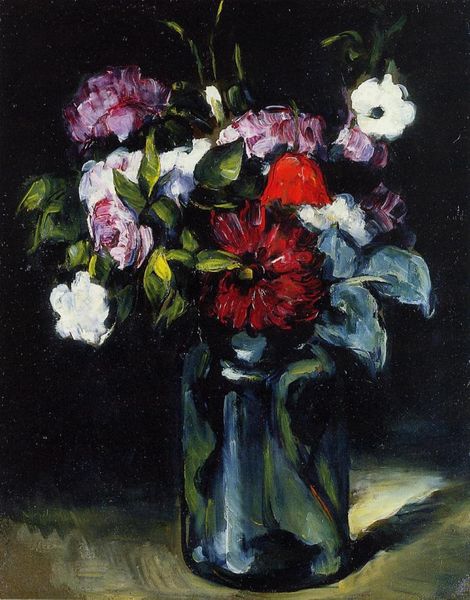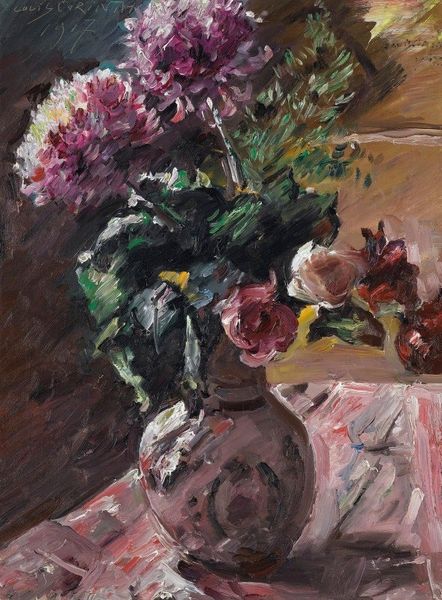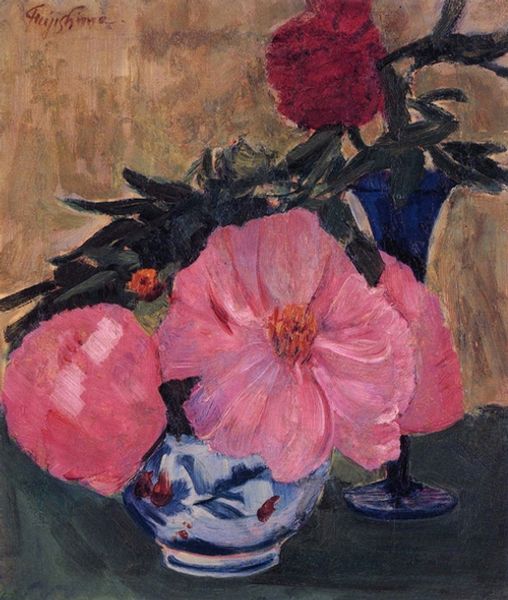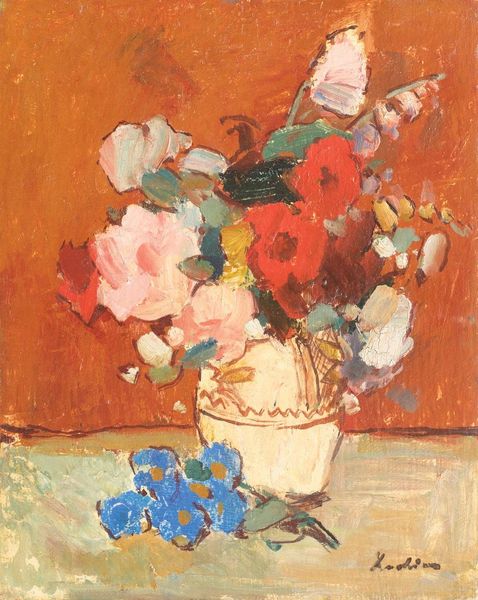
photography
#
still-life
#
garden
#
abstract painting
#
flower
#
impressionist landscape
#
possibly oil pastel
#
photography
#
handmade artwork painting
#
oil painting
#
fluid art
#
acrylic on canvas
#
plant
#
animal portrait
#
painting painterly
#
animal drawing portrait
Copyright: Public domain
Curator: "Flowers in a Vase", a small-scale still life, captivates us with its informal charm and luminous textures. Although the artwork lacks a precise creation date, it is currently held in a private collection. Editor: It’s surprisingly evocative. I'm struck by its melancholic tone, almost as if these blooms are nearing the end of their ephemeral beauty. The hazy quality really hits home, you know? Curator: Precisely. Looking closely, one might observe how the gestural brushstrokes render each petal with soft gradations, moving away from rigid forms in favour of capturing light and atmosphere. The lack of meticulous detail feels characteristic of the broader Impressionist movement and the shift from academic representational practices. Editor: And considering Impressionism's radical rejection of the Salon system, the choice of a domestic subject like a flower arrangement becomes almost a quiet act of rebellion in the late 19th century. These artists redefined what was considered worthy of portrayal. It's like they’re democratizing beauty itself. Curator: Indeed. Renoir and his contemporaries aimed to capture the fleeting impressions of the everyday world, turning away from grand historical or mythological themes. We see art entering the sphere of the commonplace, focusing on bourgeois leisure and enjoyment, aligning art with broader consumer culture dynamics. Editor: Thinking about how this aesthetic impacted fashion and domestic life...those soft edges, diffused lighting... They’re echoing contemporary shifts in women's roles and idealized femininity. Are we looking at symbols of accessible domesticity that promote new constructs of beauty? Curator: The subject, certainly, allows us to think of the painting as a commentary on middle-class values and domestic life during the height of the Impressionist moment. Renoir captures the transience and beauty in ordinary life—it subtly mirrors social values of the era. Editor: It really pulls at the threads of gender and class constructs of that period. It highlights shifts in seeing the everyday as an art topic— and it remains powerful even today. Curator: It encapsulates not just the aesthetics but a cultural turning point in Western art, it seems. Editor: It offers an intriguing perspective on shifting societal attitudes—still beautiful, and thought provoking.
Comments
No comments
Be the first to comment and join the conversation on the ultimate creative platform.
